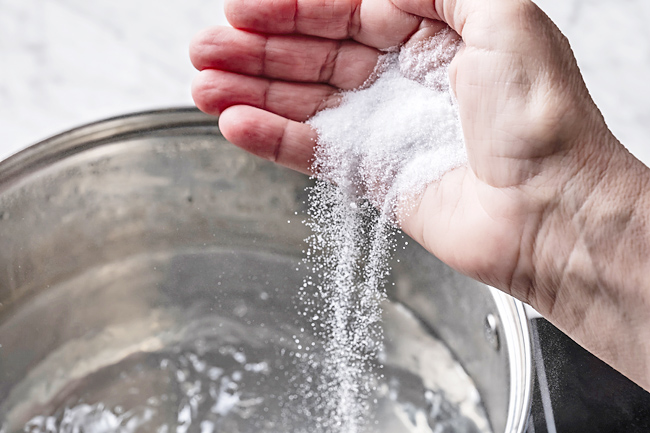Becky Krystal
THE WASHINGTON POST – You’re making pasta. The water comes to a boil, and it’s time to add the salt. But how much? Do you even pay attention?
Count me among the people who typically dump some indiscriminate amount in and move on. Count me also among the people who have at some point or another repeated the oft-cited benchmark that you should salt the water “until it’s as salty as the sea”.
“The sea is really salty,” said cookbook author Katie Parla. “You want to spit it out right away.”
“Spit it out right away” is not the flavour I’m going for when cooking.
Salt in pasta water should elevate the flavour of a dish, not overpower it, said chef Michael Friedman of Washington’s Red Hen restaurant, where the Bidens recently dined on two orders of the no-doubt-perfectly seasoned rigatoni with fennel and sausage.
Consider the water one point of several along the way where you’ll be reaching for salt. To build flavour, “you salt throughout the process”, said Parla.

Parla, who just released Food of the Italian Islands, said she’s never actually measured salt for pasta water. Her “general rule of thumb” is that pasta water should taste as salty as well-seasoned soup. But you won’t know that unless you taste it, which I watched Friedman do with his fingertips when we cooked the rigatoni together in The Washington Post’s Food Lab. If you’re worried about burning the tips of your fingers – we don’t all have Teflon chef hands! – siphon out a little bit of water with a spoon, blow on it until it’s cool and then taste.
If your pasta dish contains a particularly salty component, such as lots of cheese or cured meat, Parla said you may want to dial back the salt in the water.
Avoiding overly salted water is also important because so often the water is used to bring together, or emulsify, a simple pasta sauce, as in Spaghetti Carbonara, or help heartier ones, as in the aforementioned Red Hen rigatoni, coat the noodles, since starches released from the pasta remain in the water.
Add too-heavily-salted pasta water to your sauce and “you’re done,” Friedman said, and not in a good way. Salt in pasta water is crucial to regulating that starchiness to keep it from getting out of hand. When pasta is cooked in water, its starch granules take on water, swell, soften and release some of the starches, Harold McGee wrote in On Food and Cooking. “Salt in the cooking water not only flavours the noodles, but limits starch gelation and so reduces cooking losses and stickiness,” he said.
There is in fact an acceptable range of salt to add to pasta water, Daniel Gritzer said over at Serious Eats, which is good considering that needs may vary depending on the dish or personal preference. Gritzer’s experiments showed that water at half per cent to two per cent salinity (as measured by weight of the salt divided by the weight of the water) was acceptable, equating to three-quarter teaspoon to one tablespoon fine sea salt per liter of water (approximately one quart, or four cups).
For its part, America’s Test Kitchen recommended one tablespoon table salt per four quarts of water (one gallon) for well-seasoned pasta, which aligns with the low end of Gritzer’s range.




